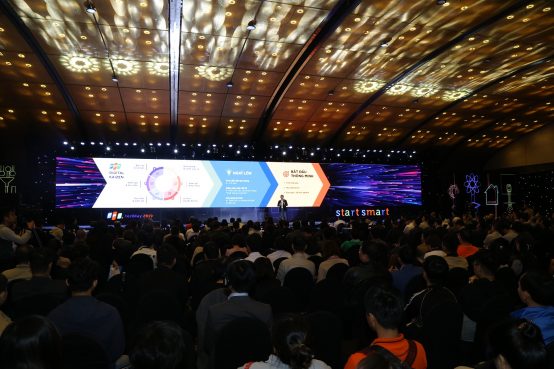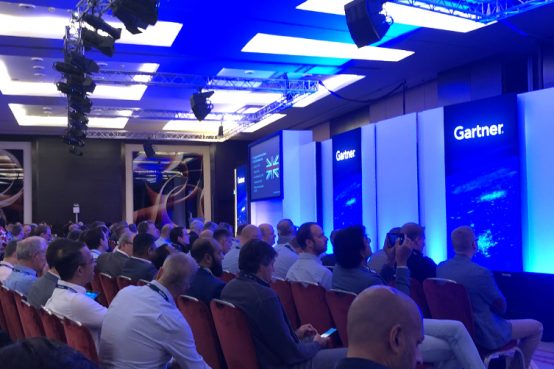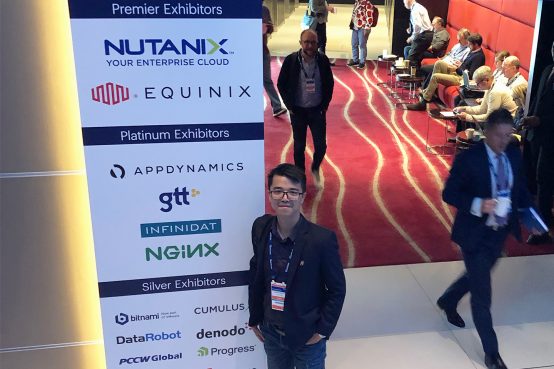The start of a new industrial revolution came from the phrase Hannover in 2011. By the end of 2015, we began to hear about the Fourth Industrial Revolution (4.0). Previously, when the 3rd CM (3IR) began in the late 1950s, many countries such as Singapore, China, India… utilized and set up suitable strategies to become large economies.
Vietnam experienced the First Industrial Revolution (1IR) and the Second Industrial Revolution (2IR) and more than a third of the Industrial Revolution (3IR) in war. Because of this reason, Vietnam did not have a strong scientific and technological foundation for socio-economic development after the unification of the country. Twenty years ago, the Internet connection opened a new era for Vietnam – the revolutionary boom. Ten years after the Doi Moi (1986), we began to step into the Industrial Revolution 3.0 with the dogged determination of individuals, businesses, and governments.
Throughout that process, there were generations of individuals, businesses, and leaders who play a role in maintaining and developing the industrial revolution. There were generations whose mission is to rush to the industrial revolution and join it. We are given that mission during the Fourth Industrial Revolution.
Technological breakthroughs of the fourth industrial revolution such as artificial intelligence, artificial reality, self-driving vehicles, Nanotechnology, robot, IoT… are transforming the world. It erodes the boundaries between the biological world, the digital world, and the physical world. A team of powerful robots in factories without light can work tireless, error-free with high productivity. Countries with cheap labor forces are gradually replaced by new labor forces with a new mode of production using new materials, distribution in a new way, new business modes and an ecosystem… that never existed. Look at Uber, Airbnb, Fintech… these are the first waves of the Fourth Industrial Revolution.
Businesses in the 4.0 era
The Fourth Industrial Revolution (4IR) is taking place quietly and has had a profound impact on global businesses. Businesses that do not change or are slow to catch up will gradually be replaced and discarded. In recent years, many major brands have gone bankrupt or merged.
4IR has been, and will, transform the entire economy with new business models. It completely changes the way businesses interact with customers, interact with each other; from demand analysis, marketing, sales, to customer care, supply chain, ecosystem. It also changes the way we manage our business and work on a daily basis.
The banking industry has mentioned Banking 4.0. Marketing has launched the concept of Marketing 4.0. A number of economic researchers, business pioneers, organizations have come up with the concept of Business 4.0. All have a close two-way relationship with the Fourth Industrial Revolution. Many poor countries have taken the opportunity in the revolutions to develop into economic powerhouses. This country has become the world’s leading corporations in the first, two and three industrial revolutions. The fourth industrial revolution is the same, but everything changes with unprecedented speed, scale, and systematicity.
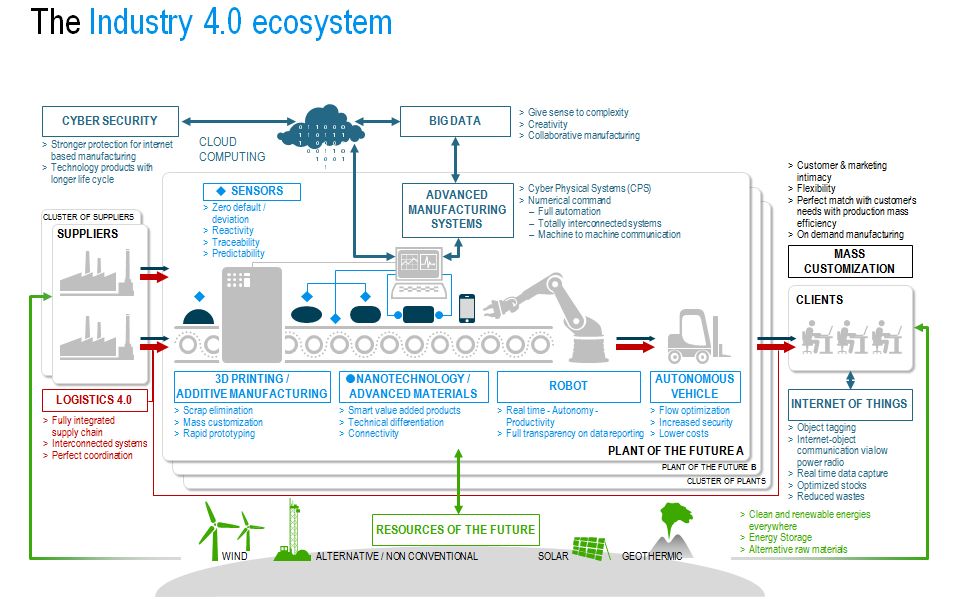
Looking back at history, there is a series of businesses and nations re-ranked every 100 years. In the new global economic picture, opportunities and challenges for businesses in Vietnam are equal to those of other countries, including the great powers. Vietnamese businesses will have the opportunity to succeed in this game if they can anticipate the future trend of Industry 4.0, Business 4.0 and build a long-term vision and strategy right now.
How does the digital transformation in businesses take place?
To participate, and above all, to become the leader in 4IR, businesses need a real revolution in innovations through the application of 4IR’s leading technologies that we call “the digital transformation”
CEOs from leading corporations expect that by 2020, 41% of their business revenues came from the digital business. Starbucks said Starbucks is a technology company that sells coffee. This is true, as, in 2016 in the US market, 44% of Starbucks sales came from electronic/mobile billing platform.

The digital transformation process offers the opportunity for a business to transform from a closed system with outputs to a “digital business” or “business in a form of a platform“.
From Gartner’s perspective, a complete digital business needs to be supported by five technology platforms:
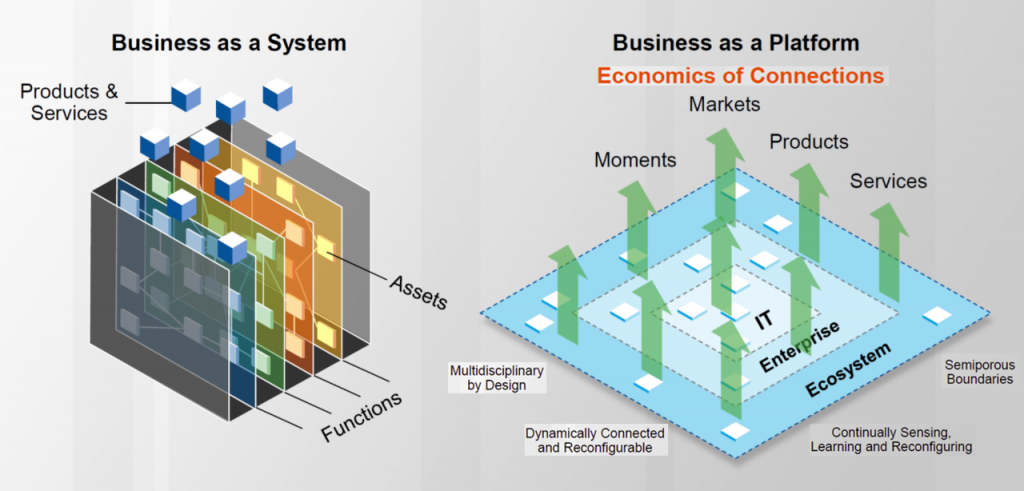
- Information Systems Platform: Back office support, operating as ERP and core systems.
- Customer experience platform: Includes key components that engage with customers such as customer portal, customer apps…
- Data and analytics platform: Ability to manage and analyze information/data.
- IoT platform: Connect physical assets to monitor, optimize, control, and generate sales/value. Includes connection, analysis, and integration of core systems and OT systems.

- Ecosystems platform: Supports the creation and connectivity of ecosystems, trading floors/communities, and communities. Key components include API management systems, control systems, and security systems.

In particular, the Information System platform as mentioned above is the operation of the back office and core systems including the systems that IT and OT (Operation Technology) of enterprises have deployed. In this platform, core components and extensions of ERP are in the back office, core systems, BI. OT will include Industry Control System, SCADA, MES… which were previously deployed independently. Recently, they have been integrated into a unified Enterprise System that converges IT and OT, facilitating comprehensive enterprise transformation.

The Customer Experience Platform is to operate interactions, deal with customers (B2C, B2B, B2B2C,…) and citizens (G2C, G2B2C, G2G2C,…). The multi-channel capability is very important, requiring a lot of effort to build a system that is deployable on all channels with a variety of experiences for the customer. In order to do this, there should be continuous updating of products, services, and channels. Businesses need to be customer-centric, IT systems need to operate outside-in instead of inside-out.

The IoT platform helps connect things (customers, partners, businesses) to IT and OT systems. From there, businesses can collect and analyze data through the IoT Analytic system to provide use cases and services to stakeholders. The IoT includes IoT for consumer IoT, IoT in non-manufacturing as well as industrial IoT (industrial, manufacturing).

The ecosystem platform allows businesses to create value from outside-in ecosystems in a highly digitized world. This requires the ability to create the presence of assets such as data, algorithms, transactions, processes through external APIs for ecosystems, ready for new business models with the connection between internal, private, and public APIs.

The Data and Analysis Platform provides real-time analytical reports. Each component of the database and analysis can provide diagnostics, predictions or suggestions. There will be no separate, discrete and ineffective BIs like before.
Businesses and the urgency of transform to digital businesses
Transforming businesses into digital businesses has now become a viable option.

This is a new war in survival with the new law when “fast fish” swallow “slow fish” rather than “big fish” swallow “small fish” like before. 4IR’s technology allows you to break the limits so you can make a breakthrough in a short time or create a new business model that quickly removes old rules. Digital transformation is the right thing to do. The problem now is how to do it?
Based on their business strategy, businesses need to determine which of the five digital platforms need to be deployed or improved. The digital transformation process requires time, resources and objective conditions. To ensure success, businesses can maintain both processes:
Firstly, businesses will transform to a digital technology platform based on long-term business strategies of the business.
Secondly, businesses should deploy outside-in models, non-traditional platforms, applications that bring a difference, help innovate quickly.
These two processes need to be connected, integrated together to maximize the value brought.
Last year, a series of workshops on the industrial revolution 4.0 was held. Vietnam is eagerly embarking on a new revolution with many opportunities and challenges.
In order to make the opportunities a reality, Vietnamese enterprises need to quickly adopt a comprehensive digital transformation strategy and action plan and build a digital technology platform. As a strategic partner who has experience in deploying core information systems such as ERP and extension systems, FPT IS is confident to be the pioneer in catching up with trends, new technologies to accompany Vietnam businesses in this journey of conversion.
